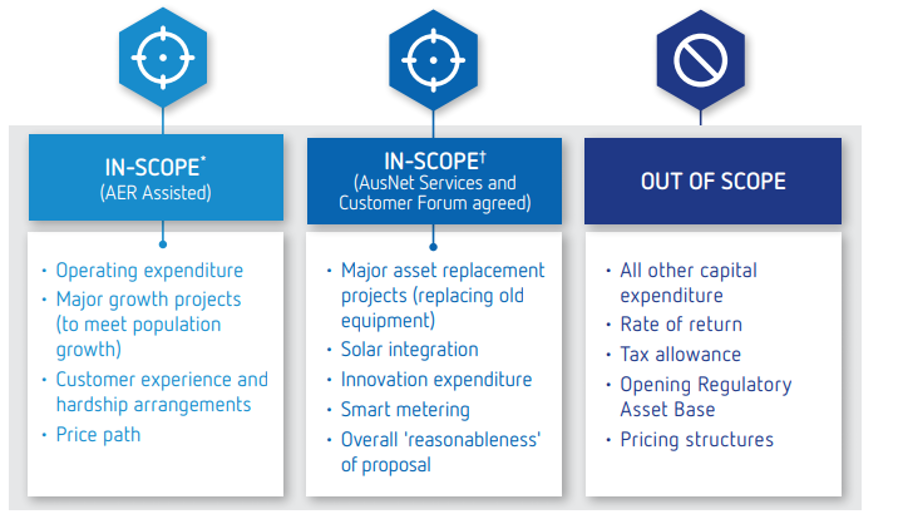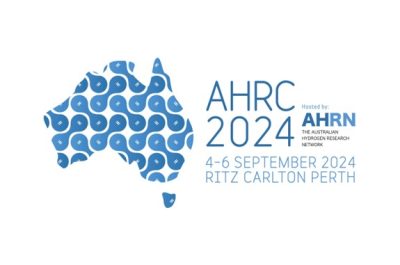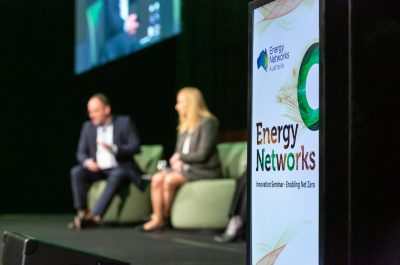New Reg for Customer Benefit – Who’d have thought?
Last month the New Reg project – a joint initiative of Energy Networks Australia, the Australian Energy Regulator (AER) and Energy Consumers Australia (ECA) to develop a more open model of network regulation – reached a critical milestone.
The New Reg project is designed to improve the responsiveness and focus of network regulation, increase customer trust and confidence in the determination process, and secure the outcomes that customers most value from their network services.
At the end of January, New Reg trial participant AusNet Services formally lodged its regulatory proposal with the AER – a proposal which was developed and negotiated over more than a year in partnership with a specially appointed customer forum.
Published alongside the proposal is the Customer Forum’s detailed Final Engagement Report. The report sets out its perspectives on the key issues for customers and the draft regulatory proposal.
An Australian first trial process…building on international models
As the forum’s report highlights, AusNet is the first Australian utility to engage a dedicated customer forum of this kind as an integral part of a revenue determination process.
The trial and New Reg model was informed by international models implemented in the Scottish water utility sector as well as by ‘negotiated settlement’ approaches in operation in the United States. The engagement between AusNet and the Customer Forum occurred across a broad range of areas in the regulatory proposal (see Figure 1 below).

Figure 1 – Scope of Customer Forum Negotiations (Source: AusNet)
Reaching practical outcomes and lower prices for customers
Discussions with the Customer Forum – as well as direct customer engagement – has shaped key components of AusNet’s business plans for the 2022-26 regulatory period.
Examples of some of the positive outcomes proposed include:
- elimination of the remote connection and de-energisation charges undertaken during business hours from no later than the end of 2021, saving customers about $750,000 a year;
- AusNet Services’ performance against customer service improvements it has agreed to will be tracked through the publication of an annual Customer Interaction and Monitoring Report;
- a $78 million replacement program will improve reliability for customers served by seven zone substations across the network;
- a $43 million distributed energy resources augmentation program will address voltage impacts on customers arising from increasing solar exports and minimise the number of customers whose export of solar energy is constrained; all customers should benefit through the downward pressure this enablement places on wholesale electricity prices and;
- a modest innovation allowance to fund a range of research and development activities intended to deliver increased benefits to customers.
Importantly, all of these outcomes are being delivered in the context of proposed falls in network charges of about 12 per cent – or $110 per customer – from currently anticipated prices at the end of 2020.
Targeting the outcomes customers value
The New Reg trial process has also resulted in the scope of existing incentive schemes under the regulatory framework being tested and potentially extended.
Currently, for example, the customer service component of the AER’s Service Target Performance Incentive Scheme measures the number of telephone calls to the customer service centre answered within 30 seconds. It is generally recognised that this is a narrow measure of customer service or satisfaction and may be limited in its value to customers.
As a result of the trial and customer forum discussions, changes may be made in this area. Following these discussions, the AER has developed a more flexible Customer Service Incentive Scheme (CSIS) that instead could enable electricity distribution companies to propose individually tailored customer service measures they have developed in consultation with their customers.
Energy Networks Australia has made a submission to the AER’s on their draft decision.
The CSIS will be established under the National Electricity Rules’ small-scale incentive scheme framework and will encourage the trialling of new customer service-related incentive schemes.
Conditional on meeting the incentive design criteria, the CSIS allows electricity distribution companies to target those aspects of service that their customers particularly value. This flexibility is fundamental as it recognises that each electricity network will have a different set of customers with potentially different customer service expectations.
For example, customers connected to a more rural network are much more affected by customer service measures related to vegetation management and bushfire mitigation. This measure is less relevant for customers serviced by an electricity distribution company in an urban area.
Helping to push the framework forward
Australia’s incentive-based energy regulation schemes have delivered $6.3 billion of additional benefits to Australian energy customers. Clearly, allowing incentives to be targeted to areas customers most value is a ‘win-win’ outcome for customers and the strength of the framework.
It also provides a further concrete example of how the New Reg model and trial is testing and pushing the regulatory framework to respond to future needs in a way that best serves network customers.
As the trial progresses to the next stage of assessment by the AER of the AusNet regulatory proposal and a draft decision later this year, this goal – adapting regulation to deliver for customers – will be front of mind for all.


